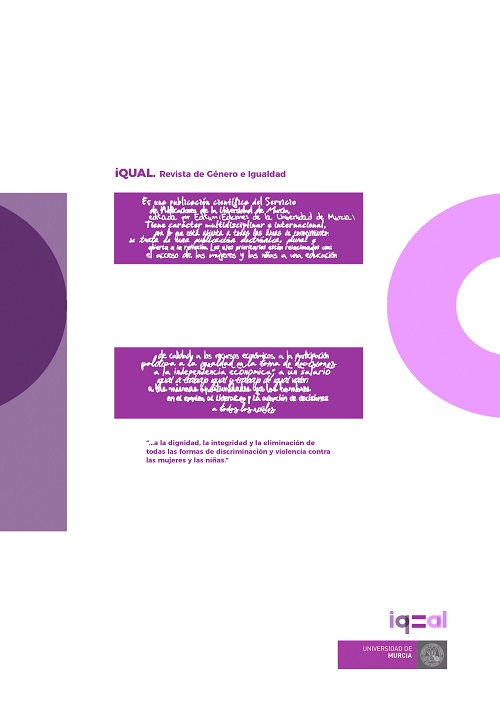Casa paterna non sicura: Analisi del processo politico di sequestro e censura nel cinema iraniano sulla violenza domestica
Abstract
I cineasti iraniani cercano sempre di compiere la loro missione di sensibilizzazione mostrando i problemi sociali nascosti e spiacevoli della famiglia e presentando un'immagine reale della violenza domestica, ma la visione tradizionale della società iraniana nei confronti della famiglia come tabù santificato è stata associata alla politica di islamizzazione. del regime iraniano. Questa visione pietrificata e parziale porta al sequestro e alla censura di film che rompono il tabù e mostrano un altro lato delle relazioni familiari.
Questo articolo analizza la visione del patriarcato e dei tabù culturali nella società iraniana nei film vietati Friday Evening, The Paternal House e Girl's House, utilizzando il metodo della critica interpretavista. Uno sguardo critico al cinema politicizzato iraniano può essere efficace nell'eliminare gli ostacoli alla sensibilizzazione delle ragazze vittime.
La fusione delle politiche di islamizzazione del governo iraniano con una società piena di tabù culturali e di santificazione della famiglia ha portato i film realizzati nel campo della violenza domestica a dover affrontare la censura e il divieto di infrangere questa sacralità. Separare il cinema come fonte di ispirazione nel campo della prevenzione della violenza domestica dalla politica aiuterà il processo di rottura dei tabù culturali ingiustificati e, quindi, dell'immunità delle donne dalla violenza domestica.
Downloads
Riferimenti bibliografici
Abrahamian, E. (2021). Iran Between Two Revolutions. New Jersey: Princeton University Press.
Aresta, M. (2012). A look at the analytical foundations of the system of the Islamic Republic of Iran, reflections on political jurisprudence and the jurisprudential foundations of the Constitution of the Islamic Republic of Iran. Tehran :book garden Press. (In Persian).
Axworthy, M. (2016). Revolutionary Iran: A History of the Islamic Republic. London: Oxford University Press.
Abbasi, I., & Al-Sharqi , L. (2015). Media Censorship: Freedom Versus Responsibility. Journal of Law and Conflict Resolution, 7(4):21-24. URL:file:///C:/Users/wifi% 20store/D own loa ds /m ediacensor ship%2 0 (1).pdf
Agah,V.(2022). Moral, Political and Sociology-Cultural censorship of Cinematic Works, in Law and Practical Procedure of the Ministry of Culture and Islamic Guidance. Communication culture studies, 23(57):197-220. URL:http://www.jccs.ir/article_120900.html?lang=en
Allan, K. (2018). Taboo words and language: An overview. London: Oxford University Press.
Azizi, I. (2017). Censorship in cinema from the sixties to today. Democracy newspaper, pp. A 3 A4.URL:https://www.mardomsalari.ir/report/ 72672/%D9%85%D9%85%DB%8C% D8%B2%DB%8C-%D8%B3%DB%8C%D9%86%D9%85%D8%A7-%D8%AF%D9%8 7%D9 %87-%D8%B4%D8%B5%D8%AA-%D8%A7%D9%85%D8%B1%D9%88%D8%B2
Berlin, I. (1969). Two Concepts of Liberty, Four Essays On Liberty. London:Oxford University Press.
Benstead, L. (2020). Conceptualizing and measuring patriarchy: The importance of feminist theory.Mediterranean Politics .26:234-246 . URL:https://w ww.tandf online.c om/doi/abs/1 0.10 80/1 3 6 2 93 95.2020.1729627
Borzoeyan,M., & zadsham,M. (2021). An investigation into the roots and cultural dimensions of the concept of virginity. Woman Interdisciplinary Researches Journal. 2(3): 73-84. DOI:20.1001.1.27831175.1399.2.4.6.4
Dryden,J. (2016). Plutarch’SLives of Illustrious Men, Translated from the Greek: With Notes, Critical and Historical. Wentworth Press.
Eisner, M., & Ghuneim, L. (2013). Honor killing attitudes amongst adolescents in Amman, Jordan.Aggressive Behavior. 39(5): 405-417. URL:https://onlinelibra ry.wiley.com/d oi/10.100 2/a b.2 1485
Elyasi,M., Purnorouz, M., & Mohammadi Mehr,Gh. (2007). Review of family shows in Iranian serials.Communication research. 14(51): 136-157.(In persian) URL:http://cr.iribr esearch.ir/article _24302_ e7 40099 af908b0ff7884c0ce6b929da8.pdf
Farajiha,M., Mirkhalili, M., & Siavashi, S.(2022). Examining the consequences of sexual harassment by blood relative. Social Welfare.22(84):177.229. URL:file:///C:/Use rs/wifi%20store/ Downlo ads/Yektaweb_J-v22n84p131-en.pdf
Goh, J., Bandt-Law, B., Cheek, N., Sinclair,S., & Kaiser, Ch. (2022). Narrow Prototypes and Neglected Victims. Journal of Personality and Social Psychology: Interpersonal Relations and Group Processes. 20(21):1-21. URL:https://www.apa.org/pubs/journals/releases/psp-pspi0000260.pdf
Gill, A. (2019). Honor Killings and the Quest for Justice in Black and Minority Ethnic Communities in the United Kingdom. Expert Group Meeting on good practices in legislation to address harmful practices against women United Nations Conference Centre Addis Ababa. Ethiopia.
Grand , J. (2022). Some challenges to the new paternalism. Behavioural Public Policy . 6(1) : 160-171. URL:https://www.semanticscholar.org/paper/Some-challenges-to-the-new-paternalism-Grand/ce563000f78a0c625582e807650ecc59dd8af1db
Gholami,A., Sudani,M., Farhadi, H. &, khojasteh, R.(2019). Exploring factors affecting violence against married women in Ahvaz. Sociological research. 12(44): 117-155.https ://soc.ga rmsar.ia u.ir/arti cle_673 879.html.
Heilmann, Ph., & Cook, C.(2010). Censorship and Two Types of Self-Censorship.The Centre for Philosophy of Natural and Social Science.6(2):1-26. URL:http://eprints.lse.ac.uk/ 27595/1/Censorship_ and_two _types_of_self-censorship_(LSERO).pdf
Illinois Protocol for Partner Abuse Intervention Programs. (2005). Domestic violence advisory council. Retrieved from http ://www.ilcdvp.org/Documents/Male%20Protocol%20Manual.pdf.
khoshbavar, D. (2022). Critique of the two perspectives of Western democracy and religious democracy from the perspective of Iranian intellectuals. Journal of Political Science. 17 (56): 81-92.(In Persian). URL:https://journals.iau.ir/article _689354_75a46520442 21d2751edc4d d72a 427df.pdf
kazemzadeh, M.(2008). Intra-Elite Factionalism and the 2004 Majles Elections in Iran. Middle Eastern Studies. 44 (2): 189–214. URL:https://www.tandfonline.com/doi/ abs/10.10 80/002 632 00701874867
Mesbah Yazdi, M. (2000). Political Theory of Islam. Publishing Center of Imam Khomeini Educational and Research Institute. Qom.(In persian)
MacLean, K., Hearle, Ch., & Ruwanpura,N.. (2020). Stigma of staining? Negotiating menstrual taboos amongst young women in Kenya. Women's Studies International Forum. 78(4):1-10. URL:https :// ww w.sciencedirect.com/science/article/abs/pii/S0277539518303959?via%3Dihub
Nikbakhsh, B., Sharifi, M., Amirmazaheri ,A., Woosoghee , M., & Kazemee pour, Sh. (2021). Polarization of the political leanings of reformism and fundamentalism of the citizens according to the amount of social capital in the elections of the Islamic Republic of Iran. Political Sociology Research.4(2): 83-116. URL:http://jou.spsiran.ir/artic le_142756_7602aa9 b4112aa a 5b0bbe34 54c1ba0d f.pdf ?lang=en
Pehlivan, B. (2016). How Social Deviance Represented and Controlled by Mass Media: A Field Study on Children’s Animated Movies. EUL Journal of Social Sciences. VII(II):162-173. URL:file:///C:/User s/wifi%20store/Downloads/SosyalSapknlnMedyadakiSunumuveKontrolizgiFilmlerzerineBirAlanalmas281462-263092%20(1).pdf
Riahi, M., & Esmaili, V.(2019). A Sociological Study of Attitudes towards Honor Killing among Residents of Marivan. Journal of Irnian Social Studies. 15(3): 3-25. URL:http://www.jss-isa .i r/ article_34722_ fe6698c70fa301dd6d3a942ffe79e235.pdf?lang=en
Strategies for confronting domestic violence .(1993). United nations office at vienna. Center for social development and humanitarian affairs.
Suber, P. (2003). A sceptical theory of morality and law. International Studies in Philosophy. 35 (4):134-135. https://philpapers.org/rec/SUBAST
Tabatabaie, H,. & Momeni, A. (2021). The concept of taboo in the popular culture of Sarkvir people. popular culture and literature.37(9): 229-258.( In persian) URL:https://cfl.modares.ac.ir/article-11-45487-fa.html
Thomas, P., Liu, H., & Umberson, D. (2017). Family Relationships and Well-Being. Innovation in Aging.1(3): 1-11. URL:file:///C:/Users/wifi%20store/Downloads/Family_Relationships_and_Well-Bein g%20(1).pdf
Wayan, k. & Nyoman,.S. (2020). Women and Cultural Patriarchy in Politics. Budapest International Research and Critics Institute-Journal.3(3): 2158-2164. URL: Women and Cultu ral Patriarchy in Politics. Budapest International Research and Critics Institute-Journal
Wastnidge, E. (2012). Iran and its Place Among Nations. Iranian Studies. 45(1):149-152. URL:https:// www.tandfonline.com/doi/abs/10.1080/00210862.2011.594633
Yousefi, A., & Akbari, H. (2012). Sociological Reflection in Identifying and Prioritizing Iranian Social Issues. Journal of Social Problems of Iran. 1: 195-223. (In Persian) URL:file:///C:/Us ers/wifi %20 store/Downloads/26713900107.pdf
Zandi, B., bahreyni,M., Sabzevari, M., & Mahdi Beyraghdar, R. ( 2019). Socio-cognitive investigation of taboo and good interpretation in the structures of phrases, idioms and proverbs in Persian and English. Linguistic essays. 6(9):,317-334.(In persian) URL:https://lrr.modares.ac.ir/article-14-25866-fa.html
Copyright (c) 2024 Servicio de Publicaciones Universidad de Murcia

Questo lavoro è fornito con la licenza Creative Commons Attribuzione - Non commerciale 4.0 Internazionale.









